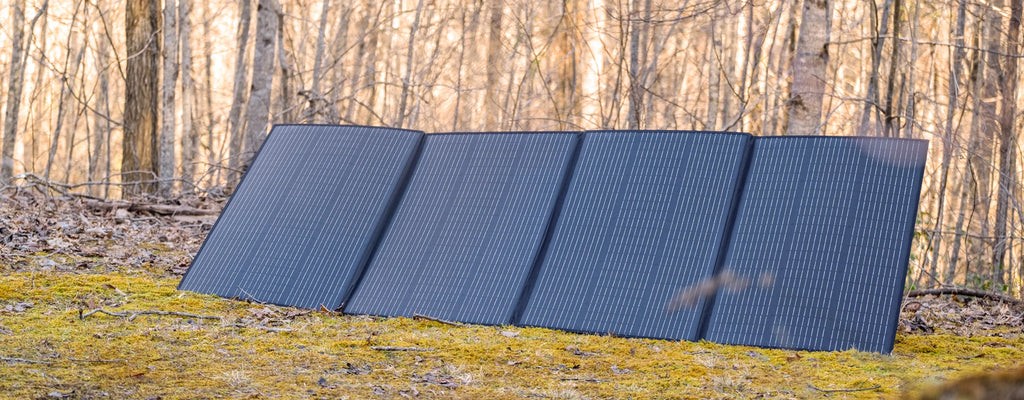Could you charge an electric car using a portable solar panel?

How do portable solar panels work?
Portable solar panels are exactly what they sound like, moveable solar panels. Rather than being fixed to a roof or ground mount system, they are foldable and portable. Portable solar panels can be both polycrystalline and monocrystalline.
Due to their nature, portable solar panels often produce much less energy than rooftop or ground mounted solar systems. This makes sense as how could you imagine carrying around a 10,000 watt portable solar system? Very unlikely as they would probably weigh about 850lbs (assuming they were portable panels, roof mount solar panels would be even heavier).
In light of the fact that portable solar panels produce much less energy than rooftop systems, could they still theoretically charge electric vehicles
Can you charge your electric car with portable solar panels?
It’s likely that you are already aware of the photovoltaic effect, which allows solar panels to generate electricity. As of 2020, more than 2.7 million solar systems are currently providing power to homes throughout the United States. Meanwhile, the electric vehicle market is also rapidly growing, with approximately 607,600 light electric vehicles sold in the U.S. in 2021.
It’s clear that solar panels and electric vehicles complement each other perfectly, with the former producing free electricity and the latter running on it. It’s an obvious choice for many people, including yourself. However, while a rooftop solar system is capable of powering both a home and an electric car, what about portable solar panels? Can they also charge an electric car?

How many portable solar panels would I need to charge an EV?
Knowing that portable solar panels can charge EVs, albeit inefficiently, the question arises: how many solar panels are needed for efficient charging?
Climatebiz suggests that an average Tesla consuming 18.1 kWh every 62.13 miles would require eight 400-watt solar panels. Based on the average mileage of U.S. citizens, which is 13,476 miles per year, a DC generation capacity of 3.2 kW is sufficient.
This means that by using nine PV350 Bluetti portable solar panels, you could charge your electric car if you drive the average American mileage.
Why don't electric vehicles have solar panels attached?
A question that we commonly encounter is why electric vehicles aren’t equipped with solar panels given that they rely on electricity to run.
The answer lies in the limited surface area available on a vehicle to accommodate a solar system large enough to power it.
For instance, the Tesla Model 3 has a surface area of 90 square feet, considering both its width and length, while its roof area is even smaller, at around 20 square feet.
In comparison, nine PV350 solar panels require roughly 189 square feet of space. Therefore, there is not enough room on a typical vehicle to accommodate a solar system that could generate sufficient power for an electric vehicle.
Final Conclusions
As you may have realized by now, this is not a feasible solution in 2022 due to the limited space available. However, if the vehicle were larger, it might be more practical to install a solar system.



